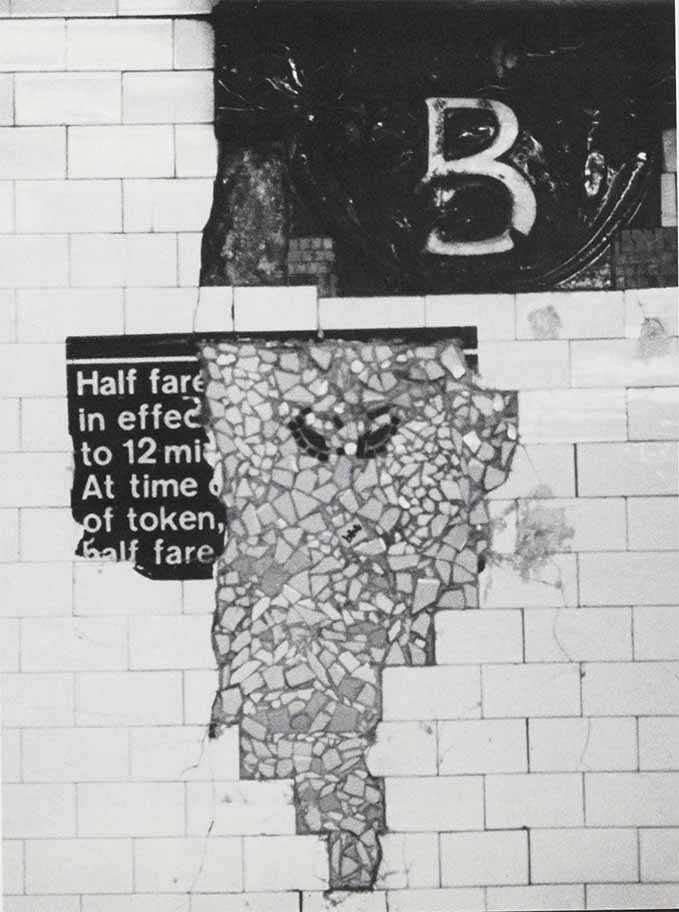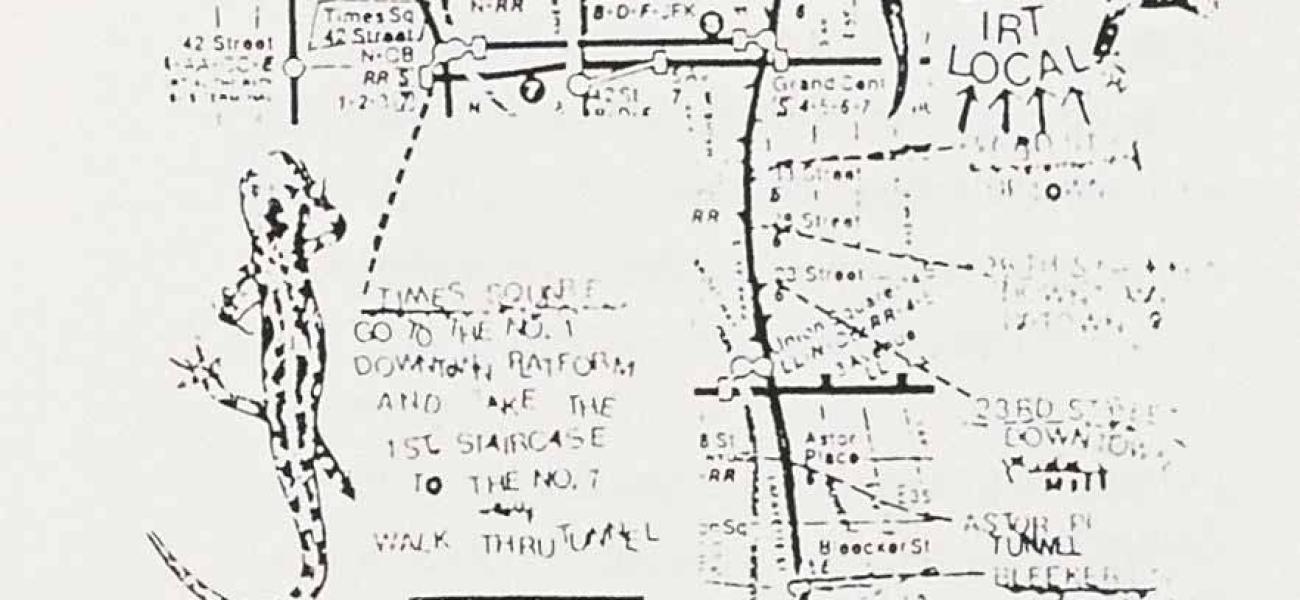Guerilla Mosaics
It is hard to decide which cliché aptly fits how we got our start in the business of ceramic tile and mosaic. Either a simple twist of fate or being in the right place at the right time-or a little of both.
We were working for a landlord in pre-WWII buildings in Upper Manhattan, installing smoke alarms and steam valves in residential apartments. The landlord recognized that his once luxurious buildings were now old and in need of repair and he asked, in addition to our other tasks, if we could fix the damaged tiles in his bathrooms. We had never tiled before, but we said yes and learned as we went along and soon became proficient tilesetters. Being artists (Denise a painter, Susan a photographer) and having worked at too many dull jobs for too little money to continue doing art, we were happy to find something enjoyable and financially fullfilling.
While commuting to work in the subways – a dreaded part of our day – we began to notice the beautiful and intricate mosaics around us. We had a new appreciation for the craft of tilesetting, and we then saw that these old stations were truly New York City landmarks. It was sad that little or no maintenance was done to these old station walls. Believing that we could incorporate our art and our work by repairing some of the holes in the station walls we decided to do mosaic graffiti and thereby make our mark on New York City.
Our first project was a tiny area at the Bleecker Street station on the #6 Lexington Avenue line. We knew that we were doing something constructive, but we also knew that it was against the law, so with excitement, anxiety, anticipation, and fear we quickly glued in about seven pieces of colored tiles in a two-inch-square area, while looking over our shoulders every few seconds. When we had finished, we hopped on the next train that pulled in and rode the subway for a couple of hours, gloating over our achievement and scouting out new territories to repair. We returned to the scene of the crime later that night to grout and gaze upon our just completed work. Encountering no obstacles and having a great time bolstered our confidence and we then possessed enough bravado to tackle a bigger area in an even more populated station. We became more methodical in carrying out our plan.

The next site was 23rd Street on the Lexington Avenue line. We measured the space at the station and returned to our studio. We cut out a piece of mesh to the exact specifications and glued a custom-made mosaic to the mesh. Equipped with a bucket of cement, a trowel, a small amount of grout, and a sponge, we set out by train to our destination. One of us spread the cement, the other quickly slapped on the mosaic, sponged it off, and then we boarded the next train. We always returned to grout and see our completed work.
We had become skilled, fast. Our sites became bigger, ar:id we lost almost all the anxiety that we had felt the first time. The day we installed our biggest and what we deemed to be our best mosaic, a Transit cop observed the whole operation. He approached us, summons book in hand, and all the feelings from the first time at Bleecker Street came rushing back.
The officer said, "You know this is illegal." We explained that we did not make the hole in the wall but that we were simply repairing it. He asked if we were authorized to do this repair job, and we confessed that we were not. We wanted to finish the piece so we convinced the officer, with all sincerity, of the service we were doing. Fortunately, we were not arrested or ticketed, and our worst fears were squelched.
Aside from this encounter with the law, we went along unnoticed. The stereotype of blase New York subway riders is not unwarranted. On occasion, a passer-by would stop and look at what we were doing, but for the most part people remained absorbed in their newspapers and problems. We were just one more sight in the New York subway.
One article appeared about our repairs in "The Paper." Notice was taken of it by a Japanese video crew who made a video of us and our work that was shown on a news program on Japanese television. The attention was exciting, but it would have been more so if it had come from the Near East as· well as the Far East.
As it turns out, the Metropolitan Transit Authority, like us, thought it was time to repair its deteriorating subway walls, and slowly our mosaics have begun to disappear. A friend of ours observed a worker removing one of the mosaics at Bleecker Street and replacing it with plain white ceramic tile. Our friend approached the worker and asked what he was doing. The worker actually expressed sorrow at having to rip out our work but said, "Orders are orders."
These subway mosaics have given us a tremendous thrill because they exist in such public places, possibly the most public places in New York City. Those times when we'd meet someone who had seen and liked our subway work, we were gratified in knowing that we'd pleased someone else in addition to ourselves.
We have not installed any subway mosaics lately, but we plan to do more and are always on the lookout for new spaces. We did one while visiting London at the Oxford Street station, of two snakes intertwined.
Since then, we have created and installed many mosaics in and around New York City in restaurants, stores, and private homes. We also make mosaic furniture and housewares, but we get the most satisfaction from largescale public pieces. We are now receiving more media attention, but we will never forget where we started. Our roots are deeply planted underground in the New York City subway.

